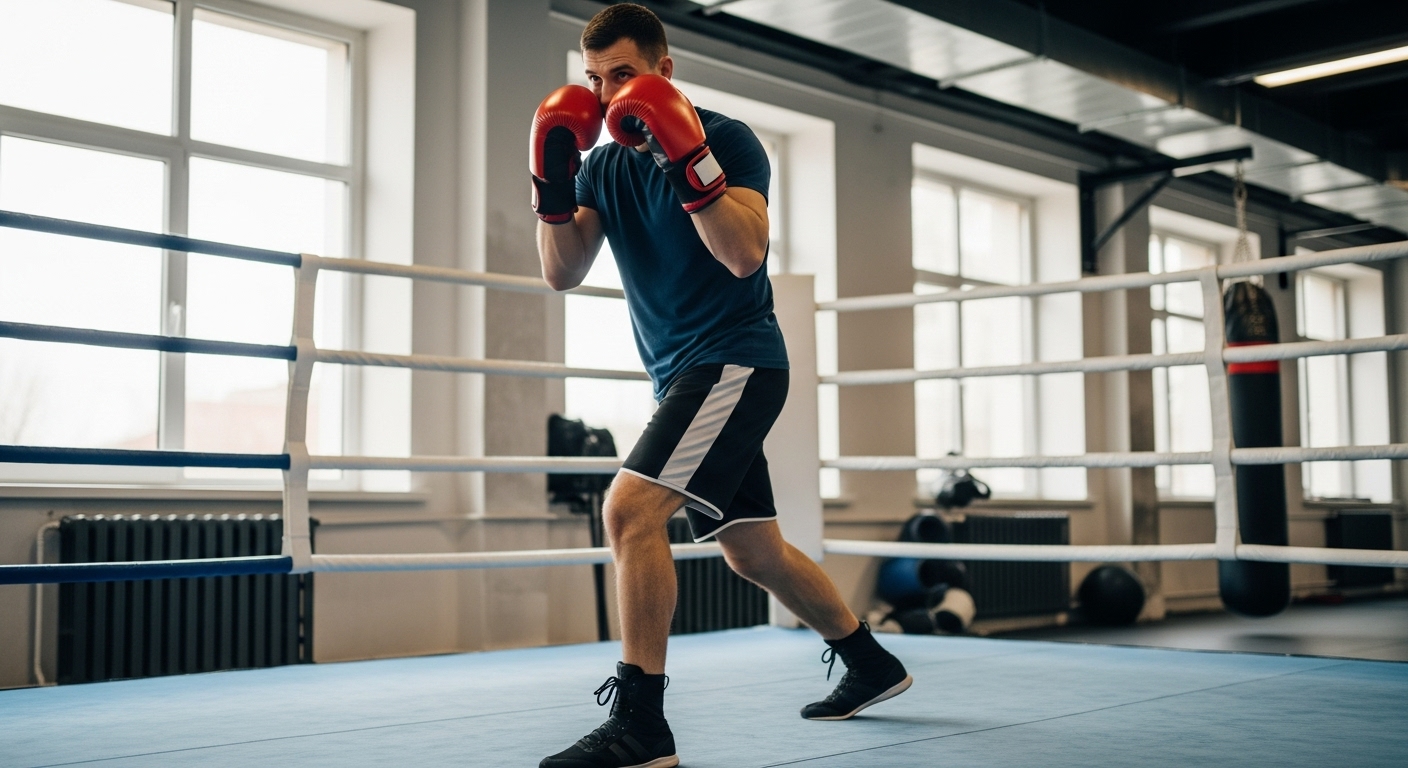If you want to throw powerful punches, move like a pro, and protect yourself from getting hit, you need to start with one thing: the proper boxing stance. After 20 years in the sport, I can tell you this—if your stance is wrong, everything else will fall apart.
Whether you’re aiming to step into the ring or just want to train for fitness, mastering your stance is the first and most important skill you should learn. And if you want the full breakdown on everything a beginner should know, make sure you check out The Complete Beginner’s Guide to Boxing.
Let’s break down the key parts of a strong, balanced stance so you can start your boxing journey the right way.
1. Foot Placement: Building a Strong Base
Think of your feet as the foundation of your boxing house. If the foundation is weak, the house can’t stand.
- Lead foot forward: If you’re right-handed (orthodox stance), your left foot should be slightly ahead. If you’re left-handed (southpaw), it’s your right foot forward.
- Hip-width apart: Keep your feet a comfortable distance apart—not too wide, not too narrow. This gives you both balance and mobility.
- Rear heel slightly lifted: Your back foot should have the heel just a little off the ground. This keeps you light and ready to move.
Your feet should form a slight angle, about 45 degrees. You don’t want them in a straight line—that makes you unstable. And remember, your weight should be evenly balanced so you can move forward, backward, or sideways without losing control.
2. Weight Distribution: Stay Balanced and Ready
The biggest mistake beginners make is leaning too far forward or back. When you do that, you lose balance and power.
- 50/50 weight split between your front and back leg.
- Knees slightly bent—think “springy,” not stiff.
- Keep your body relaxed, not tense.
When you’re balanced, you can slip punches, throw combinations, and move around the ring without wasting energy.
3. Hand Position: Protect Yourself First
In boxing, defense is just as important as offense. Your hands are your first line of defense.
- Lead hand: Keep it up around your cheekbone or eye level. This hand is used for jabs and quick punches.
- Rear hand: Protects your chin and is ready to throw power punches.
- Elbows: Should be tucked close to your body to guard your ribs.
A lot of new fighters drop their hands when they get tired—don’t do that. Even after two decades of fighting, my hands automatically stay up. It’s muscle memory, and it starts with good habits on day one.
4. Maintaining Balance: Movement Without Losing Stability
A proper stance isn’t just about standing still—it’s about moving without losing your base.
- Move by pushing off your back foot when going forward.
- Push off your front foot when going backward.
- When moving sideways, lead with the foot closest to that direction.
- Never cross your feet or bring them too close together when moving. That’s how you lose balance and open yourself up to punches.
5. Common Mistakes to Avoid
Over the years, I’ve seen beginners make the same stance mistakes again and again. Learn from them so you can skip the frustration:
- Standing too tall – This makes you an easy target. Stay slightly crouched with bent knees.
- Flat feet – You lose speed and mobility. Keep that back heel slightly lifted.
- Leaning too much forward – This throws you off balance and makes you predictable.
- Hands too low – Protect your face at all times.
6. Practice Makes Perfect
The proper boxing stance might feel uncomfortable at first. That’s normal. Your muscles need time to adapt, and your brain needs time to turn these positions into second nature.
Here’s a drill I give to beginners:
- Get into stance in front of a mirror.
- Practice small movements—forward, backward, left, right—while keeping balance.
- Keep your hands up and eyes forward.
- Repeat for 2–3 minutes, rest, then repeat again.
After a few weeks, you’ll notice that you no longer have to “think” about your stance—it’ll just happen naturally.
Final Thoughts
Boxing is an art, but like any art, it’s built on fundamentals. And there’s no more important fundamental than your stance. It’s the foundation for your punches, your defense, and your movement.
Get your foot placement right. Keep your weight balanced. Protect your face. Stay light and ready to move. Master these basics, and you’ll already be ahead of most beginners.
If you’re serious about starting your boxing journey, don’t stop here—make sure you check out The Complete Beginner’s Guide to Boxing. It’s packed with tips, drills, and techniques to help you progress faster and avoid common mistakes.
Remember: Champions are built from the ground up—and it all starts with your stance.
